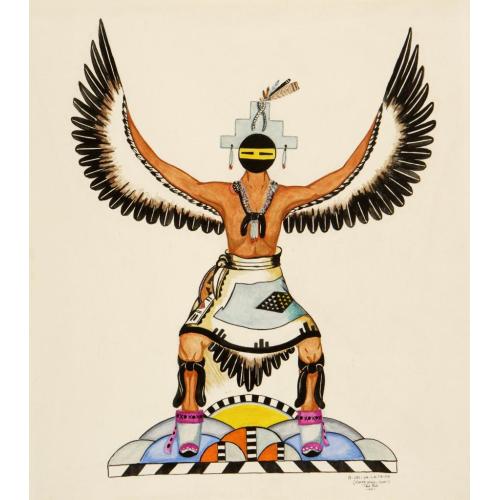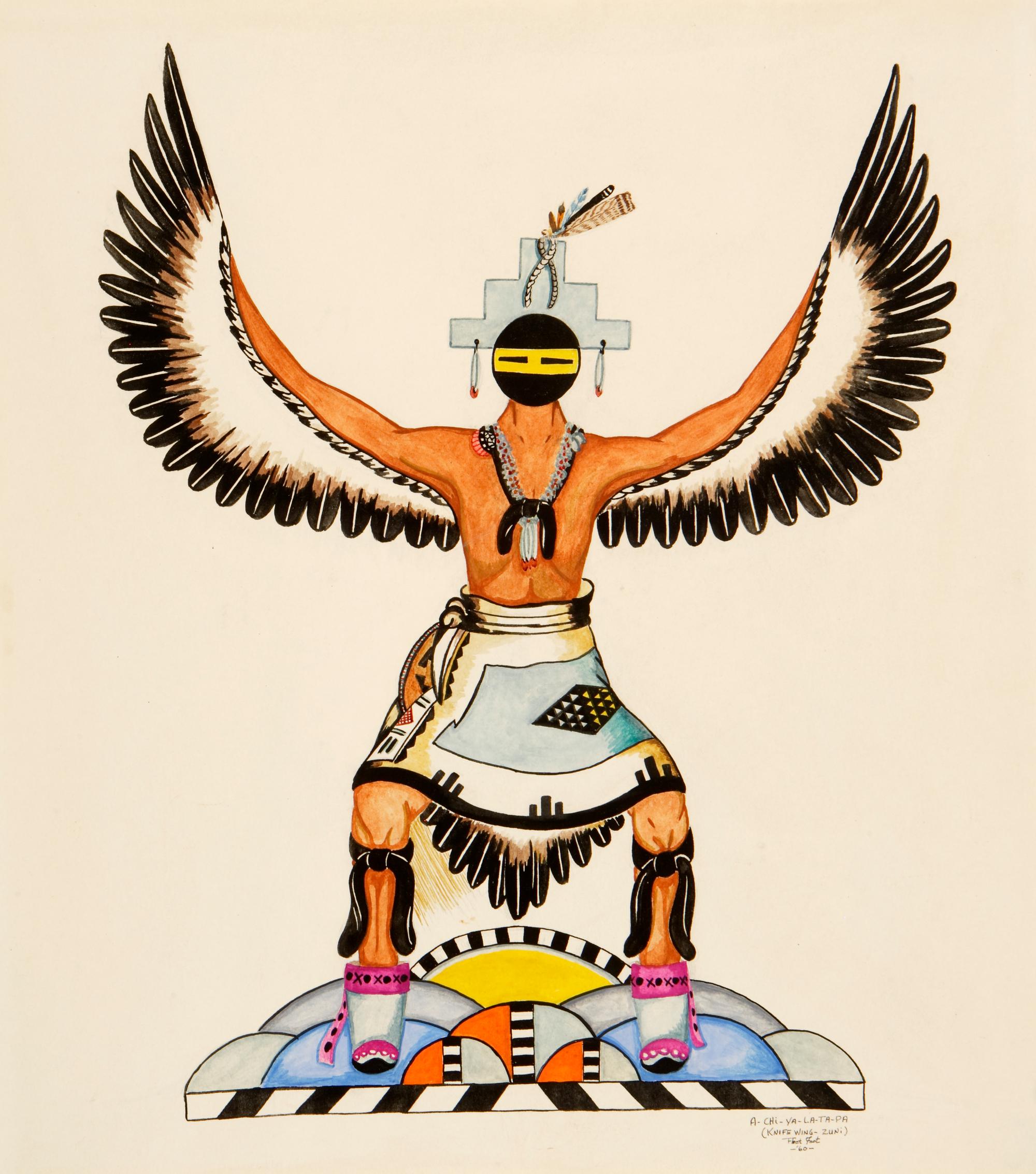
Photograph by Addison Doty. Copyright 2010 School for Advanced Research.
"A-Chi-Ya-La-Ta-Pa (Knife Wing - Zuni)"
Date: c. 1960
Artist or Maker: Edmund Ladd (1926-1999)
Dimensions:
Overall: 44.5 x 39.5 cm (17 1/2 x 15 9/16 in.)
Medium: paper: wove | paint, watercolor
Place Made:
Zuni Pueblo, McKinley County, New Mexico, Southwest, United States, North America
Object Number: SAR.1989-7-420
Not on view
Tribal Collection Review RemarksOctavius Seowtewa during collection review visit Nov. 16 and 17, 2009 (Events Record “Collection Review: Zuni Tribe, Review 3”): Knife Wing is a figure in Zuni stories who helped the Zuni people find their homelands. Because he could fly he was able to help them find a good place to live. He is a symbol of strength and is associated with War Chiefs. He is also depicted on some types of altars. Knife Wing is always depicted as dressed very similarly to an Eagle Dancer. The difference between the two is that Knife Wing wears the type of face and step cloud headdress depicted in this painting; an Eagle Dancer would wear a kokko face with an eagle beak. Though dressed much like an Eagle Dancer, Knife Wing is only a symbol and is not represented in dances. The Zuni name for Knife Wing is Achiyaladaba.
Achi-ya-la-ta-pa, written in the lower right corner of the painting, is the Zuni word for Knife Wing. “Fleet Foot” may be a part of the title for the painting, or it may be an alternate name for the artist (Edmund Ladd).
In Collection(s)
The Indian Arts Research Center, in collaboration with Native American community scholars, strives to present accurate collections records. Records may be updated as new information becomes available and is reviewed with the Native American community having cultural affinity to particular items. Please write to iarc@sarsf.org if you have questions or concerns related to the documentation.
